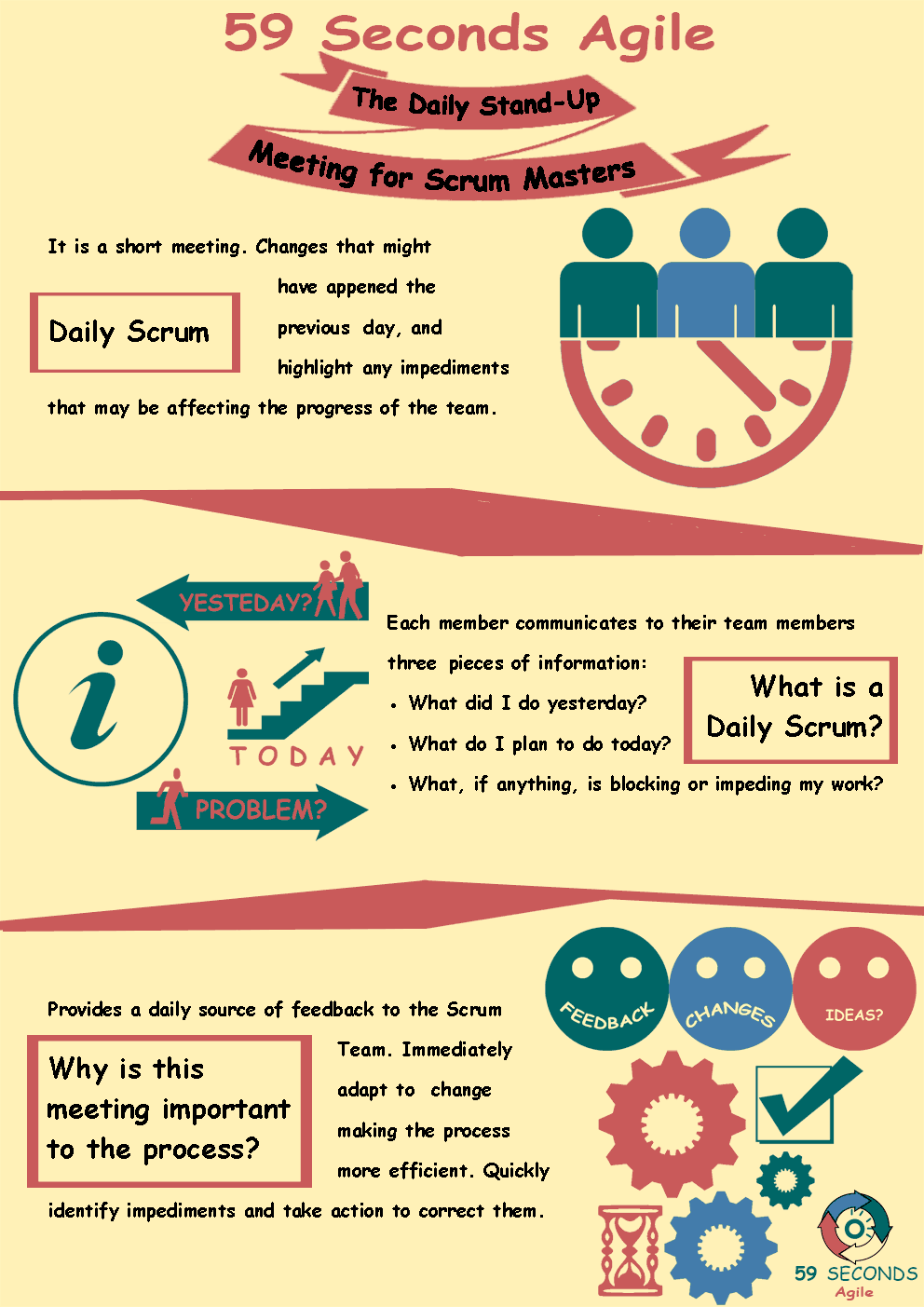The Agile Daily Stand-Up
A 59 Seconds Agile Training Video
This is an ‘Agile Daily Stand-Up’ training video.
Continue to Part 11
The Agile Daily Stand-Up
A 59 Seconds Agile Article
This article provides an ‘Introduction to The Agile Daily Stand-Up‘ and looks to discuss what the Daily Stand-Up is, the format of the meeting and the benefits of the Daily Scrum.
Physical or Virtual Boards
Another consideration is whether you use a physical or virtual scrum or Kanban board. If your scrum team works in one geographical location, it can be useful to have a physical scrum board to gather around and reference during the daily stand-up meetings. However, if some of your team works remotely, a virtual scrum board is the only way to ensure that the entire team has access to the board all the time.
The physical board takes less know-how to maintain than a virtual board, but the virtual board provides more ease of analysis. Physical boards have space limitations, but they can provide a focal point for the team’s communication.
Virtual boards allow for the collection of historical data and have a greater information capacity, but physical boards force specificity and brevity. There are many trade-offs; and it comes down to what works best for your specific team and company.
You may even decide to use a combination of physical and virtual boards, or to add additional categories or columns as needed. No matter what version of the board you choose to use, it will help your team to cut down on wasted time in inefficient communication.
Remember, creating an atmosphere of efficiency accelerates the delivery of value.
Continue Reading —> Next
User Stories Applied
A 59 Seconds Agile Book Review
User Stories Applied by Mike Cohn is one of our favourite books on Agile User Stories. The book starts with an overview into user stories, and details what a user story is and the different aspects of them. He then discusses how to go about writing a user story, and provides details of the INVEST criteria that can be used to determine if the story is meeting all of its objectives. Next Mike gives an in depth discussion of who user stories are written for and where to begin when gathering the details for them. The book then discusses acceptance testing user stories, including how to go about specifying these criteria and the responsibilities of the development team and customers during this process.
Continue Reading —> Next
The Agile Daily Stand-Up Meeting
A 59 Seconds Agile Video Animation
Continue Reading —> Next
The Daily Stand-Up Meeting
A 59 Seconds Agile Infographic

Continue Reading —> Next
Agile Scrum Master Training Course
Our Favourite Agile Books
We found these books great for finding out more information on Agile Scrum:
Continue Reading —> Next


